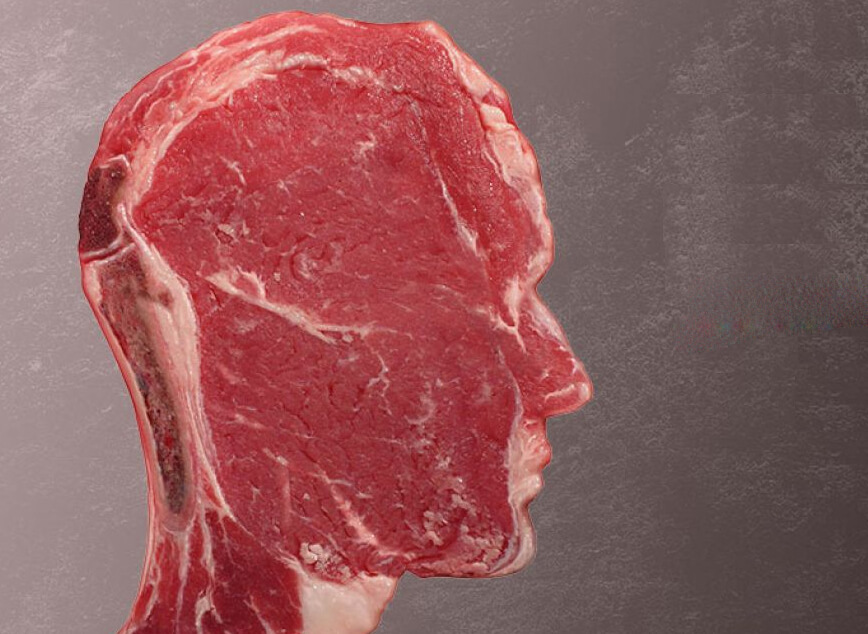The mind/body split is quite a persistent delusion, even though the two are inseparably bound. In a supreme act of imagination, “I am self” decides that it is something apart, not only from the body but almost from the rest of the universe.
This tendency to place oneself “outside” of or apart from everything else extends even to science, which until quantum mechanics demanded the participation of an observing mind, was predicated on the idea that an objectively separate universe existed and could be examined from the outside. With that conception, both space and time were considered fixed and absolute rather than dynamic. It took the genius of Einstein to displace the isolated falling apple of Newtonian physics with the connectedness of General Relativity.
Mind and meat; mind of meat; mind as meat; the mind/body split persists, in large part due to the ability of the human mind for abstract thought, i.e., the talent of converting our perception of reality into symbolic re-presentations of the world. While our senses experience the world directly, as they develop and engage with other people, our minds begin to convert sensory information to imagistic-symbolic form. The chirp of a bird becomes indelibly linked to an image of a bird; the roar of a garbage truck gets similarly classified. In this way, the world becomes a succession of memory-images tied to words, themselves symbolic re-presentations of that which we experience. Having thus metaphorically left our bodies behind, we substantially inhabit a language-based, nominal reality. We even name our “I am” selves.
Self-identity relies upon similar mechanisms, constantly re-presenting images and ideas about self to self in a fluid and continuous process that’s mostly unconscious, unless we direct our attention to the workings of mind itself. When that attention is carefully self-directed, what we discover is that there is no unitary self, but rather a bundle of self-identities: an emotional self, a thinking self, a physical feeling self, and a perceiving self, for example.
Both Western and Eastern cultures have developed ideas about the multiple self. Sigmund Freud opened identity’s can of worms when he elevated primal drives like sex, and divided the self into Ego, Id, and Superego, each having its own “agenda.” His ideas have been built upon, even rejected, but they did burst apart the notion of a unitary self and helped establish a scientific bent in Western psychology.
An Eastern conceptualization of self is found in the Buddhist Abidharma teachings, which classify the self as the aggregation of five “heaps” – body, feeling, perception, memory and consciousness. Together, these heaps appear as one “self.”
That self, however, is capable of fluid identity. Psychiatrist Robert Jay Lipton dubbed this quality of mind “Protean,” after Proteus, the mythological shapeshifter of Greek mythology. Matters of self-identity currently assert a significant role in society – i.e., identity politics, some say too significant and too divisive. I tend to agree.
I am both simultaneously and sequentially an American, New Yorker by birth, Californian by choice, husband, father, grandfather, pacifist, cook, gardener, reader, writer, planning commissioner, human meat bag, and so on. These multiple identities are parts of my ongoing, imaginative self-narrative. In and of itself, each identity is a symbolic word-label that connects to my multiple selves through one or more of the “heaps” I’ve accumulated.
Whether this psychic act of assemblage coheres into something greater than the sum of its parts, I leave dear reader, to your evaluation.








Be First to Comment